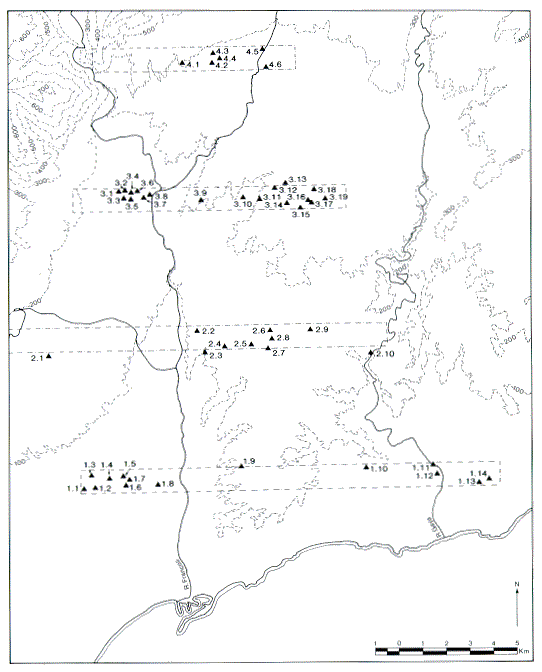Ager Tarraconensis Field Survey Project
S J Keay, Martin Millett, 2003. https://doi.org/10.5284/1000351. How to cite using this DOI
Data copyright © Prof S J Keay, Prof Martin Millett unless otherwise stated
This work is licensed under the ADS Terms of Use and Access.
Primary contact
Prof
Martin
Millett
Faculty of Classics
University of Cambridge
Sidgwick Avenue
Cambridge
CB3 9DA
England
Tel: 01223 337733
Resource identifiers
- ADS Collection: 355
- DOI:https://doi.org/10.5284/1000351
- How to cite using this DOI
Downloads
Sites Identified by the Tarraconensis Project
One of the characteristics of this region is the rarity of structural remains in the countryside. Most of the sites in this survey were visible only through traces of ceramics and building materials on the surface. Pottery distributions were examined in order to identify potential settlements.
The summary map of the territory of Tarraco below shows the location of the sites discovered and the numbering used.









